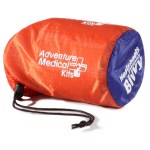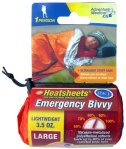During the 2010 MichCanSka trip from Michigan to Alaska we had several thousand miles to figure out the best way to lead and keep a large group of riders together and moving. In the case of Group 1 the first group on this adventure, we had several factors that kept us from braking up a group of 34+ riders into smaller more manageable groups. They were: 1) navigational knowledge and depth (especially GPS), limited availability of experienced guides, the extensive level of unknown trails, and conditions ahead of us. Although I would not recommend trying to keep this large group together on future adventures, here is some things we learned that can make it more manageable for shorter trips or events:
Trail Boss – Overall responsible for the group of riders, like the captain of a ship, they need to make sure the speed for the riding conditions and expertise levels is safe and the navigation for the route is understood and being followed, ultimately making sure everyone gets safely to the destination. This position could also be the Pacer or even a Scout. The trail boss should decide and communicate “taking a break” plans for the ride. Planning on stopping each hour is a good idea. Make sure you stop in areas with long straight aways and down the trail far enough so the back of the group is not left in a blind spot around a curve or just over the top of a hill.
Scout One – This rider needs to be able to navigate using paper maps combined with GPS and compass. Rides out front keying off the scout behind or pacer always keeping the lights of the group behind in view. Posting at all intersections and trail transitions. Finds the trail and markers, verifying with map and GPS to make sure group is on their planned route. It is important to get to intersections or trail transitions early to quickly identify the route and keep moving. Image the group behind as a large train, everytime you have to sit at an intersection and study your maps while the train piles up behind you makes it is hard to get it moving again. Keep your scout up front even if you have an experienced guide taking you through an area. We had guides getting lost and even though our scout who was back in the pack had the route plotted on GPS, he had to chase down the riders in front of him along with the guide and turn them around several times.
Scout two -Having a second scout riding behind the the lead scout, gives a longer buffer zone to give the lead scout time to find the trail and keep things moving. It also works very well if the 2nd scout also has the ability to read the maps and GPS to assist and keep the lead scout on track. Rides in front of the pacer, keeping maximim distance in front while still seeing headlights in his rearview mirrior. Its critical to post at all intersections and trail transitions until the pacer is in view.
Pacer – As the name implies this postion is responsible for setting the speed of the group. You have to envision you are pulling a train connected with rubber bands, pull too fast from a start and you will break the rubber bands and go to slow or stop alot and the train gets all bunched up. Its important that the scouts key off the pacer and don’t try and control the speed of the group themselves. This is also a good place for the Trail boss to ride if he/she has good scouts to focus on where the trail goes. Otherwise putting a mature or experienced rider in this position would work. Also, the pacer should keep in mind how many of the crossing guards they have used up and look for opportunities (long straight aways) to slow the group up to give the crossing guards a chance to get back to the front.
Crossing Guards – This turned out to be a critical position for keeping the group moving and together. We had 4 riders who road up front, behind the Pacer. At each road crossing with blind spots or obvious traffic a guard will park on the edge of the road and wave riders on. When they get to the end of the group they ride in front of the Anchor until the group stops and then go back to the front. We also found it important for the crossing guards to wear bright colored safety vest, this helped the riders spot them quickly as will as the road traffic.
The “Anchor” – This position is critical for keeping the group together and everyone accounted for. Basically the term “No one gets left behind!” sums it up pretty well. This position is responsible for making sure everyone is accounted for, Once the group is stopped it does not move forward unless the anchor agrees. The scouts need to key off the anchor and be ready when the anchor releases them to go. In large groups it is critical to perform head counts after any confusing trail situations or upon leaving congested areas or towns.
Rules of the trail:
1) When stopping the group for any reason, the control of when the group starts moving forward again is the responsiblity of the Anchor. This way the riders at the back of the group are given enough time to take restroom or snack break, the lead scout will be looking for a wave or the anchor will ride to the front to notify and/or start a count if needed.
2) Every rider in the group is responsible for the riders behind them, each should be looking back often to assure they can see 1-4 sleds back. If they don’t see anyone, they should first slow up and then stop if no one catches up. Remember to use hand signals!
3) Each rider needs to be prepared to post at every trail turn or transition. They need to stop if nessacary until they see the rider behind them and then make sure the following rider keys off them.
4) Keep your spot in the group, unless you notify the other riders during a break or stop, people need to know who is in front of them and behind.
5) Watch for “Crossing Guards working themselves back to the front. Although we minimized this risky activity by increasing the number of crossing guards and having them stay at the back until we stopped for a break, it may be needed in highly congested areas where a large number of road crossings are be encountered.
6) If the group does get separated, it is best if just the lead scout goes back to look for them, with GPS and knowlege of the trails this person is in the best position to find the stragglers or lost riders without getting lost themselves. This happened to us a couple of times in Group 1 and it worked perfectly, even finding a lost grossing guard who did not know where which direction the group went … This is another place where the flags helped identify someone in the group from a distance.
6) Attitude is critical to everyone having a good time, the most difficult part of keeping a large group together is keeping everyone’s expectations set and willingness to work as a group. It will only take a couple of riders being selfish, wanting to go faster or slower or take longer breaks to upset the whole groups dynamics and make everyone miserable.
7) The Trail boss and Anchor need to keep their eyes and ears open to how the group and individuals are doing, you may have to tweak your speeds, break times or even make arrangements to get a struggling rider up front where you can keep an eye on them or get them off the trial. The priority is to keep everyone moving safely and ultimately to the destination.
Additional helpful tips: In Group 1 the lead scout and anchor used GMRS motorola radios with a full power alert button with ear buds. If the back of the group stopped for any reason, the anchor could press the alert button and this would let the lead scout know to slow down or stop and wait for the all clear. They had a realistic range of about 1- 3 miles (35 miles on box) kept the group from getting too stretched out. These radios had better working range then the helmet communicators currently on the market.
If you have questions or comments about this post, please reply.











